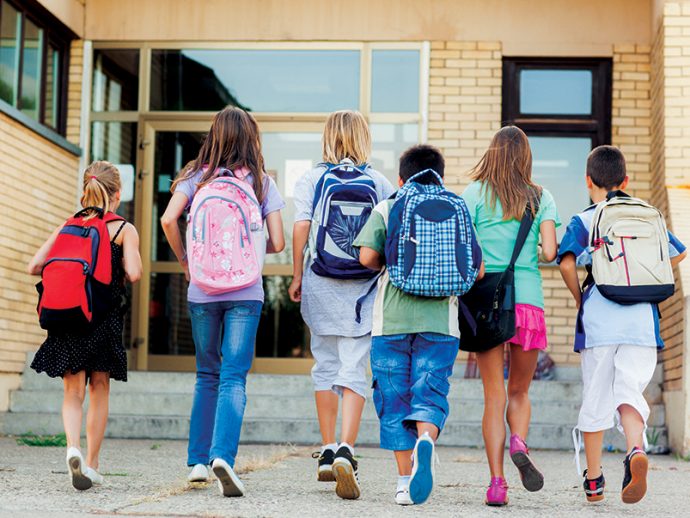
It’s the oldest line in the parenting book: “When I was your age, I walked to school—uphill both ways!” Sure, it’s an exaggeration. But research shows that leaving the car at home and instead using our own power to get to local destinations helps us, and especially kids, in unexpected ways.
It’s time to reinstate the walk to school—even if it’s relatively flat. Here’s why.
A step toward better grades
Walking or cycling to school may help your kids in the classroom. A recent study found that teenagers who engaged in 12 minutes of exercise scored better on attention and reading tests than their counterparts in a control group. These benefits lasted for 45 minutes—or enough time to make it through an early morning English test.
A key to strong bones and mental health
Physical activities like walking and cycling help us develop and maintain cardiovascular fitness, strength, flexibility and bone density. These activities also have a positive impact on mental health, including anxiety and depression.
Getting out and about is particularly important for children and adolescents, whose bodies are still developing, as 90 percent of our total bone mass is formed by the time we reach adulthood.
A way to build social ties
Another perk to active transportation is the time it allows us to connect with others. Cycling and “footing it” with friends and family members is a chance to nurture our relationships.
These connections cultivate strong social ties that can have a positive mental and physical impact on both adults and children. In adults, it may help manage stress and anxiety and has been linked to less inflammation and even a reduced risk of some forms of cancer. In children, social connectedness can help boost self-esteem and encourage interaction with new environments.
A sustainable way to get happy
Catherine O’Brien, PhD, has been researching children’s views on transportation for more than 14 years. She’s also interested in a concept that she calls “sustainable happiness”: happiness that doesn’t come at the expense of others or the environment.
O’Brien’s most recent research focuses on the relationship between active transportation and sustainable happiness. In a survey that asked about the emotional experience of children and parents on the trip to school, she found that “both the children and parents reported more positive emotions if they actively traveled to school.”
Doing it safely
When it comes to letting kids walk alone, parents most often cite “stranger danger” and fear of abduction as main reasons for driving their kids to school.
Jacky Kennedy, who has worked on community walking programs, suggests methods like the “walking school bus,” where parents take turns walking groups of neighborhood children to school.
According to Kennedy, walking or cycling is “the only opportunity that you will ever have to teach your children how to be safe in their community, what to look out for, how to deal with different situations.”
She adds, “These kinds of things won’t happen if you don’t ever take a walk with your child.”






